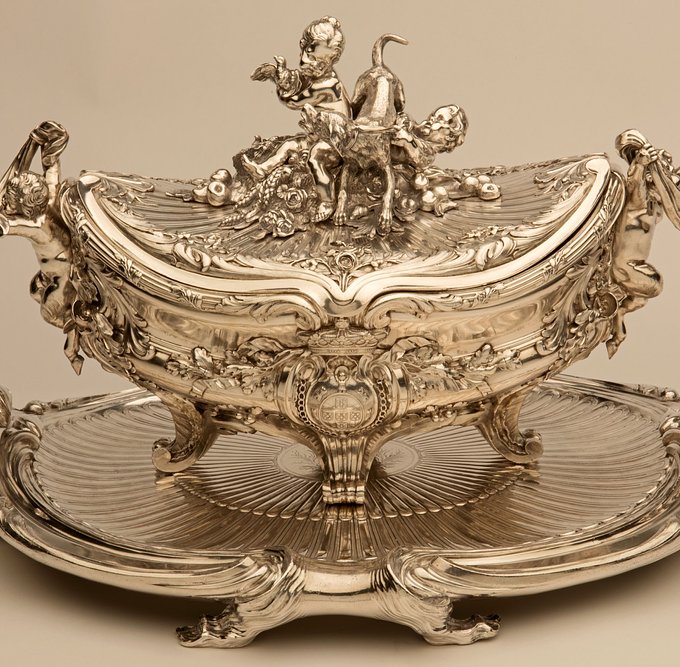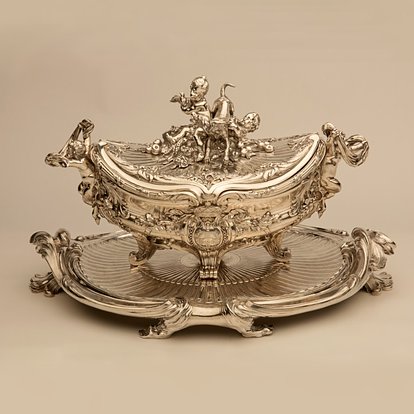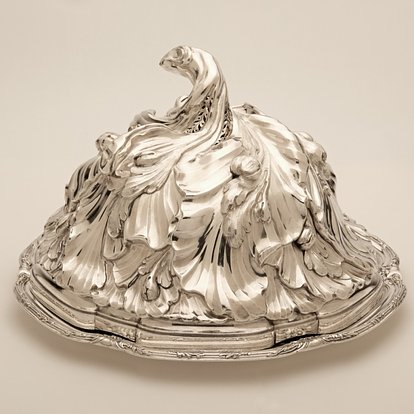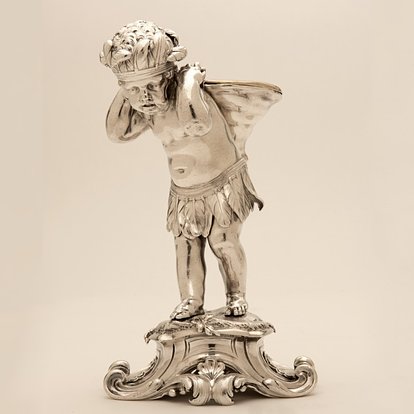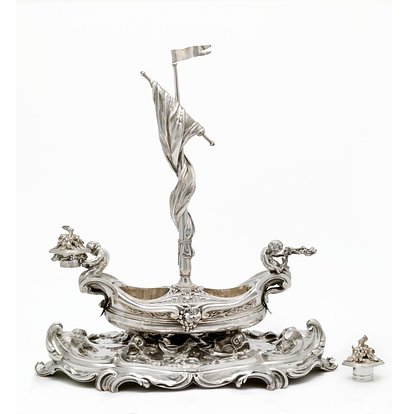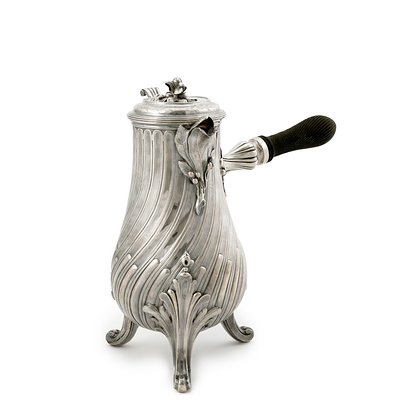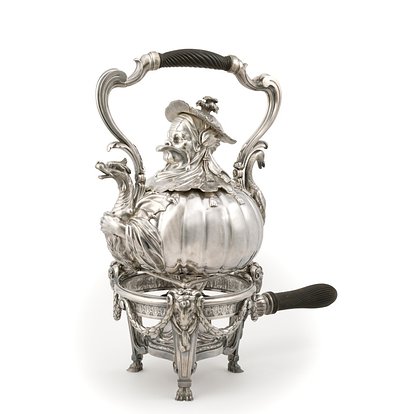The Germain silver table service
A unique testimony of the most sumptuous 18th-century stately silver table services, the tableware ordered by King D. José I from the silversmith François-Thomas Germain in June 1756, in the aftermath of the Earthquake, remains almost entirely a part of national heritage.
Designed to serve "à la française", as was customary at the European courts of the time, it would allow to arrange on the table's "stage", in a planned out and symmetrical fashion, the successive sets of magnificent works of silver on which the multiple delicacies were presented: the Course settings.
Under the coordinated action of dozens of servants "specialised in laying and removing the settings", they would follow one another throughout the four stages of a banquet, according to a strict order of courses: first the "stews", then the "roasts", the "entremets" and finally the sweetmeats and fruit.
The First-Course setting always made an impression as the grand opener of the banquet, displaying the most prestigious pieces with their eye-catching shapes, ornaments and perspectives.
The Fourth-Course setting, a key feature at the end, was the occasion for creative compositions at the centre of the table, where sculptural groups in silver were to be displayed to glorify the monarch, a true monument that was left unfinished.
Designed to serve "à la française", as was customary at the European courts of the time, it would allow to arrange on the table's "stage", in a planned out and symmetrical fashion, the successive sets of magnificent works of silver on which the multiple delicacies were presented: the Course settings.
Under the coordinated action of dozens of servants "specialised in laying and removing the settings", they would follow one another throughout the four stages of a banquet, according to a strict order of courses: first the "stews", then the "roasts", the "entremets" and finally the sweetmeats and fruit.
The First-Course setting always made an impression as the grand opener of the banquet, displaying the most prestigious pieces with their eye-catching shapes, ornaments and perspectives.
The Fourth-Course setting, a key feature at the end, was the occasion for creative compositions at the centre of the table, where sculptural groups in silver were to be displayed to glorify the monarch, a true monument that was left unfinished.

